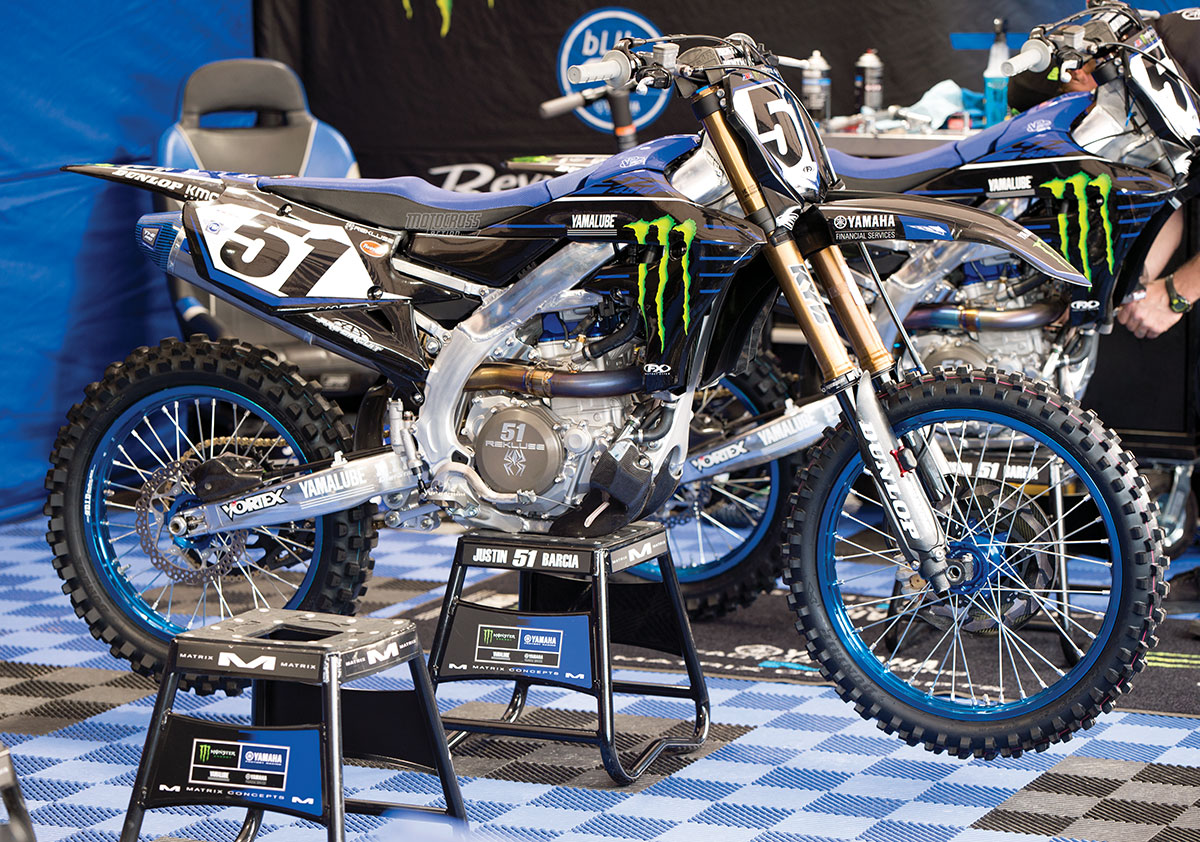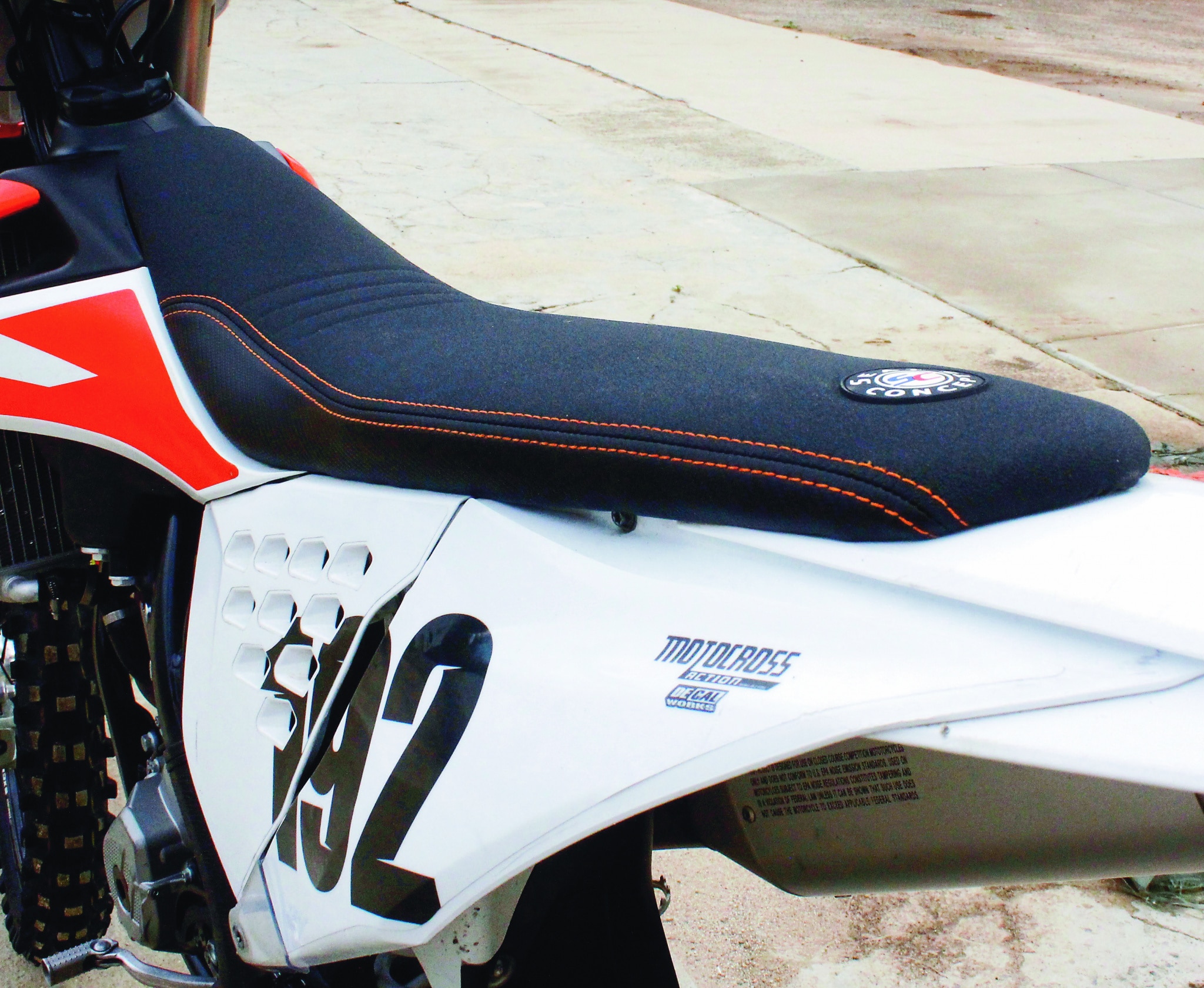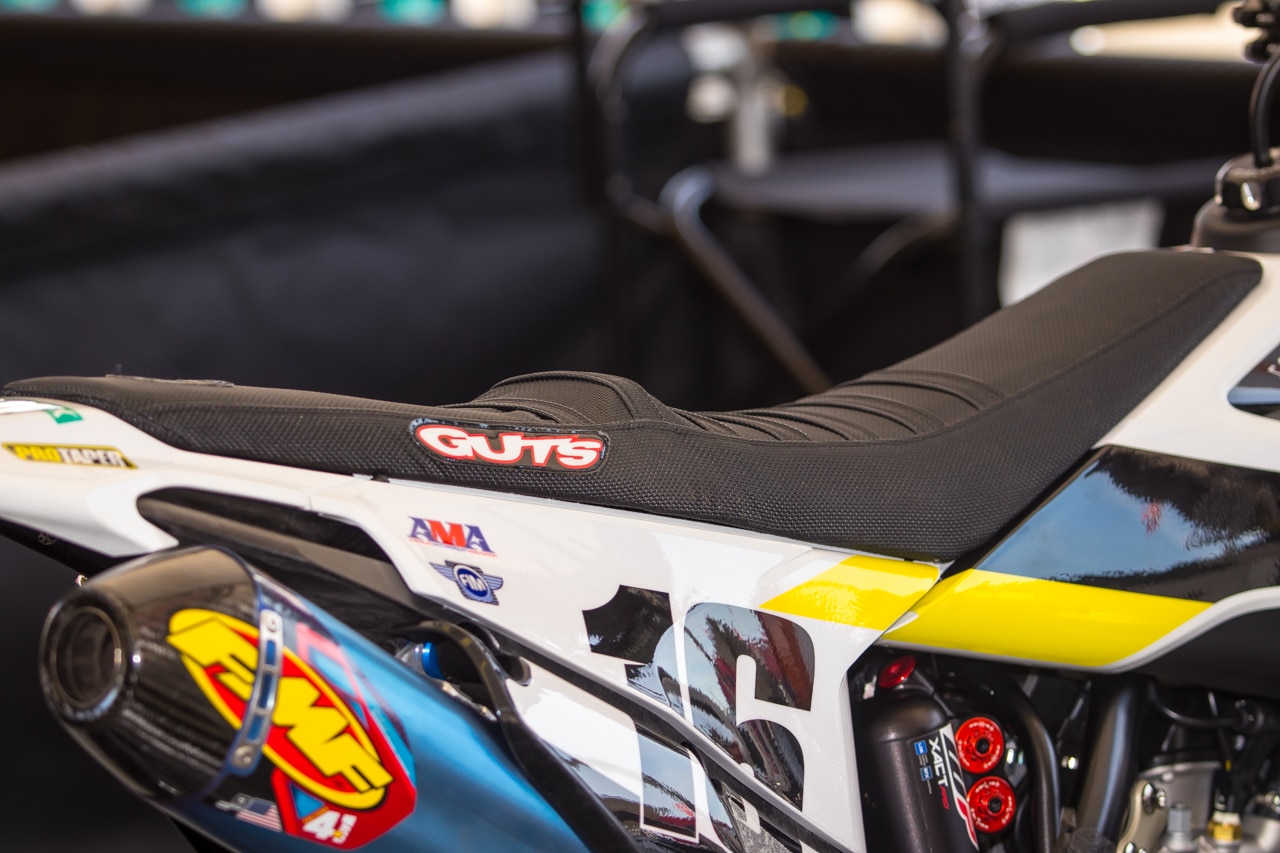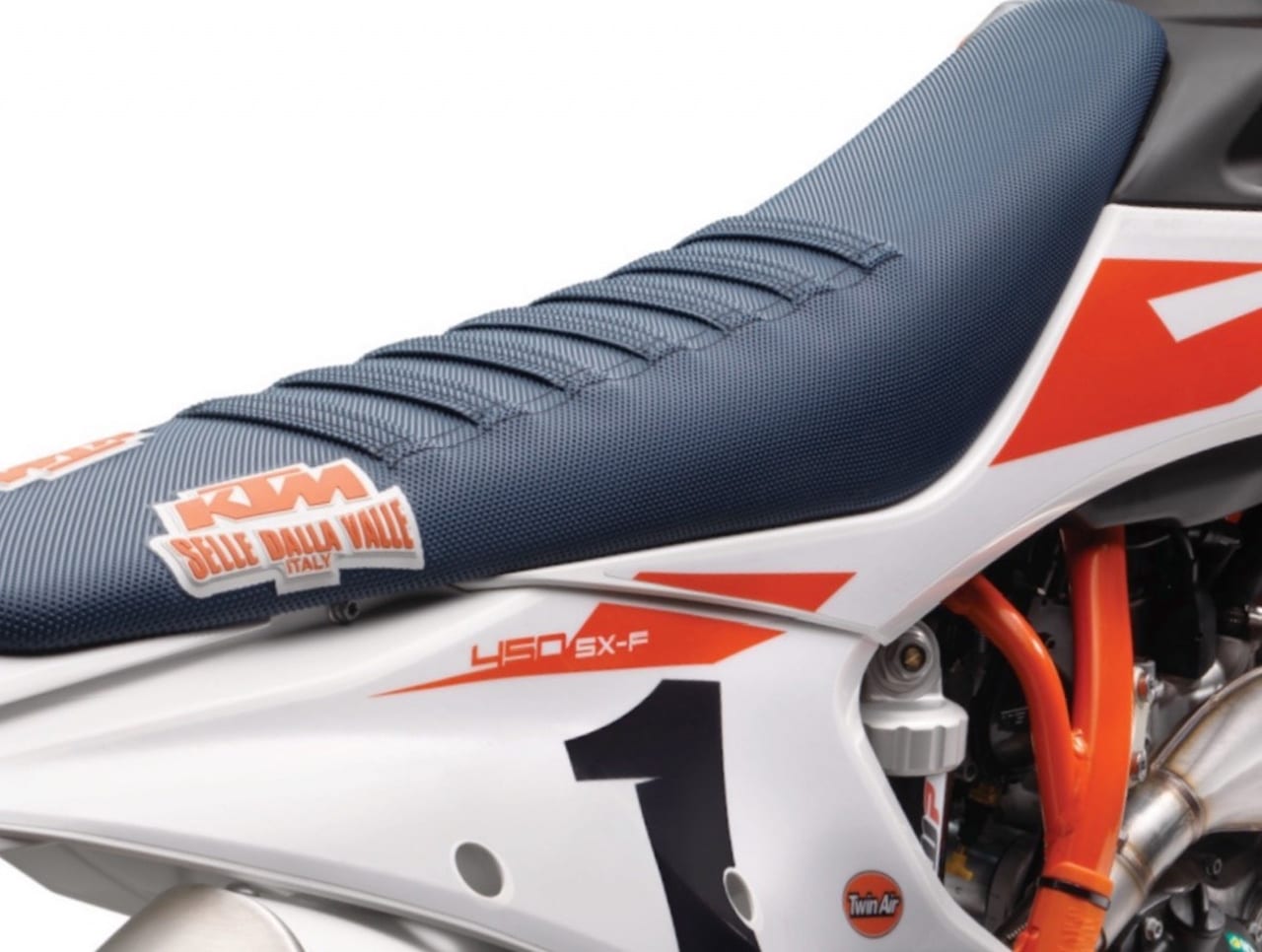TEN THINGS ABOUT MOTOCROSS SEATS: SOFT, TALL, WINGED, GRIPPER, LOW & MORE
(1) Importance. Seats play a crucial role in a dirt bike’s performance. The proper seat can drastically help or hurt a rider’s technique and ability to hold onto his machine. Many stock motocross seat covers are slippery and should be swapped out for one that meets your specific needs. Motocross seats are customizable to fit your size, riding style and preferences.
(2) Grippers. Gripper seats are designed to hold you in position, especially when accelerating. If your seat is slippery, you can slide backwards as soon as you hit the throttle. This transfers pressure to your arms as they attempt to hold you in place. If that happens over and over, it can lead to arm pump. With a gripper seat, riders are able to twist the throttle more and grip harder with their legs. Be careful about how much grip a seat has. Many gripper seats have been known to pull a rider’s pants down as he gets caught on the gripper material or pleats.
(3) Low seats. Short riders use lower seats because they can’t touch the ground when sitting on the bike, while a few tall riders choose to utilize lower seats to bring down their center of gravity. A lower center of gravity helps riders keep their bikes planted in corners. Plus, there’s more room to move around on the bike with a lower seat. You can buy low seat foam or a completely assembled low seat from a wide variety of aftermarket brands.
(4) Tall seats. Tall seats typically only have one customer—tall people. There are exceptions. The stock 2020-21 YZ450F seat comes with foam that breaks down quickly, which makes the YZ450F a prime candidate for a taller seat; however, if you aren’t exceptionally tall, then riding with a taller seat will make your arms feel awkward. If you are tall, the benefit of a taller seat is that it takes less energy to stand up and sit down, but you might need taller bars to go with it.
(5) Steps and humps. Seats with steps or humps on them started showing up on bikes when the powerful four-strokes reared their ugly heads on the moto scene. They work along with the gripper material to better hold riders in position. Seat humps, which are added pieces of foam positioned under the cover, are used to orient exactly where the rider wants his butt to be located. Humps do double duty by stopping a rider from sliding backwards while keeping a rider forward on starts. Ryan Villopoto was a big advocate of seat humps. Blackbird Racing makes seat covers, seat foam and accessory hump kits. Justin Barcia used a step seat when he was on Yamaha for the same reason. Step seats work like seat humps, only instead of adding a hump on top of the foam, they cut the original foam down in the front of the seat and form an upward slant at the middle to hold the rider in position.
(6) Soft foam. Soft seat foam offers added comfort and grip. For longer motos, softer seats are easier on your body. One caveat: if the foam is too soft, it can get crushed when landing from jumps and allow the rider to hit the subframe. The Yamahas and Husqvarnas are classic examples of bikes with seats that are too soft. One group who does benefit from soft seat foam are riders who have suffered a tailbone injury; softer seat foam cushions the injured part.
(7) Wear and tear. Many seat covers from companies such as Factory Effex feature additional reinforcements to prevent knee braces from wearing through the side of the seat cover. Factory Effex uses a hidden, heavy-duty, DuraTech, ballistic nylon material underneath its covers to enhance durability. Seat Concepts similarly uses a SuperGrip rubber knee panel on its covers to resist knee-brace wear and increase grip. The extra under-layer also lengthens foam life. If you want your seat to last even longer, avoid getting it wet when washing your bike. Otherwise, water will be absorbed by the foam and cause it to break down.
(8) Lightweight. Keeping weight down is always a priority, especially when it’s far from the center of gravity. Since the seat foam is located high on the motorcycle, saving ounces in seat foam is more beneficial than saving ounces near the engine. Guts Racing produces ultra-lightweight seat foam, but the 1-pound weight savings comes at a hefty price. The Guts Racing Phantom foam costs $199.99.
(9) RJ’s wing seat. Seven-time AMA National Champion Ricky Johnson inspired the design of Guts Racing’s wing seat (Above) that many National riders use. This cover has 1-inch-thick foam pieces that stick out on each side where the knees grip the bike. It looks funny, but with it riders can lock in their legs for ultimate traction.
(10) Comfort seats. Seat Concepts has a wide variety of seats for competitive motocross racers, but they also lead the charge in the comfort-seat department. With multiple options, such as the standard comfort, low comfort and tall comfort XL seats, riders can experience the amount of luxury they want with the proprietary foam and a wide shape at the rear to distribute weight. These seats aren’t designed for hardcore racing, but they are worth it for long days of trail or adventure riding.










Comments are closed.